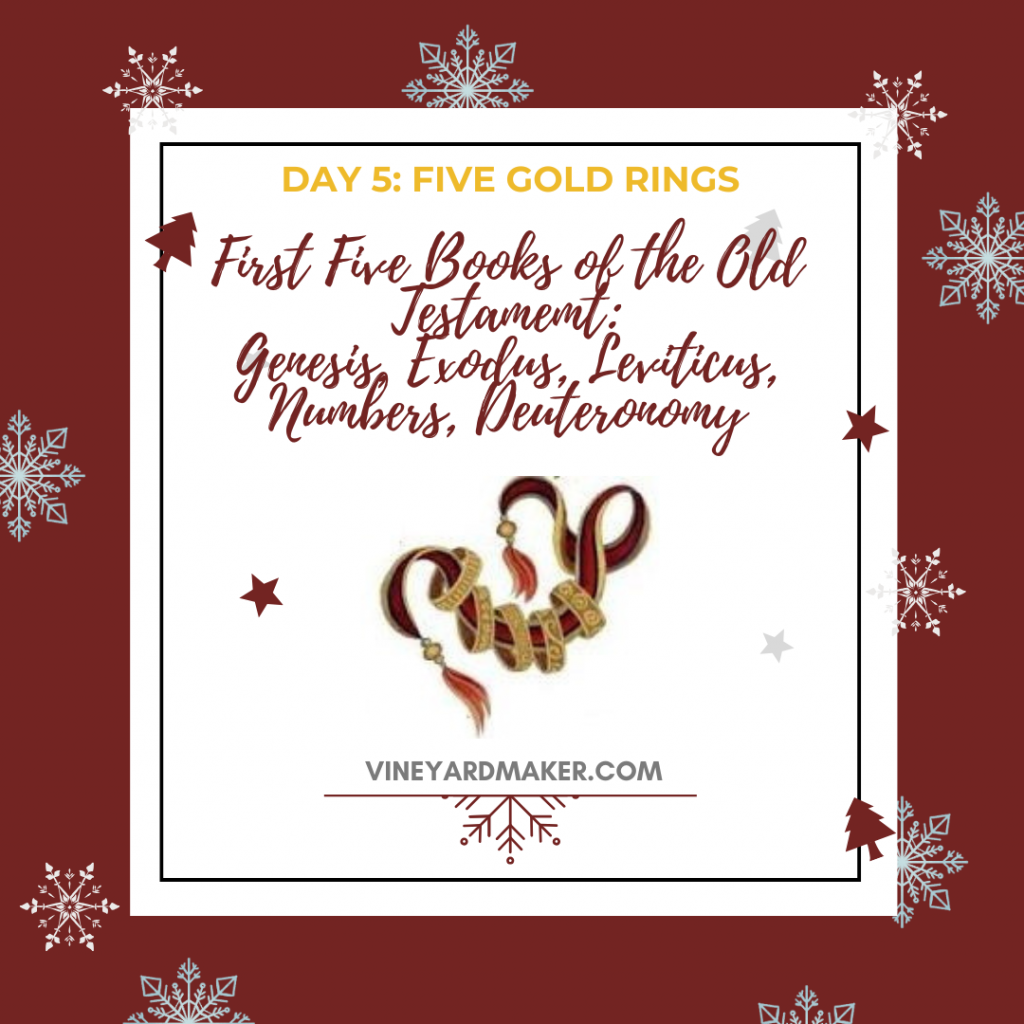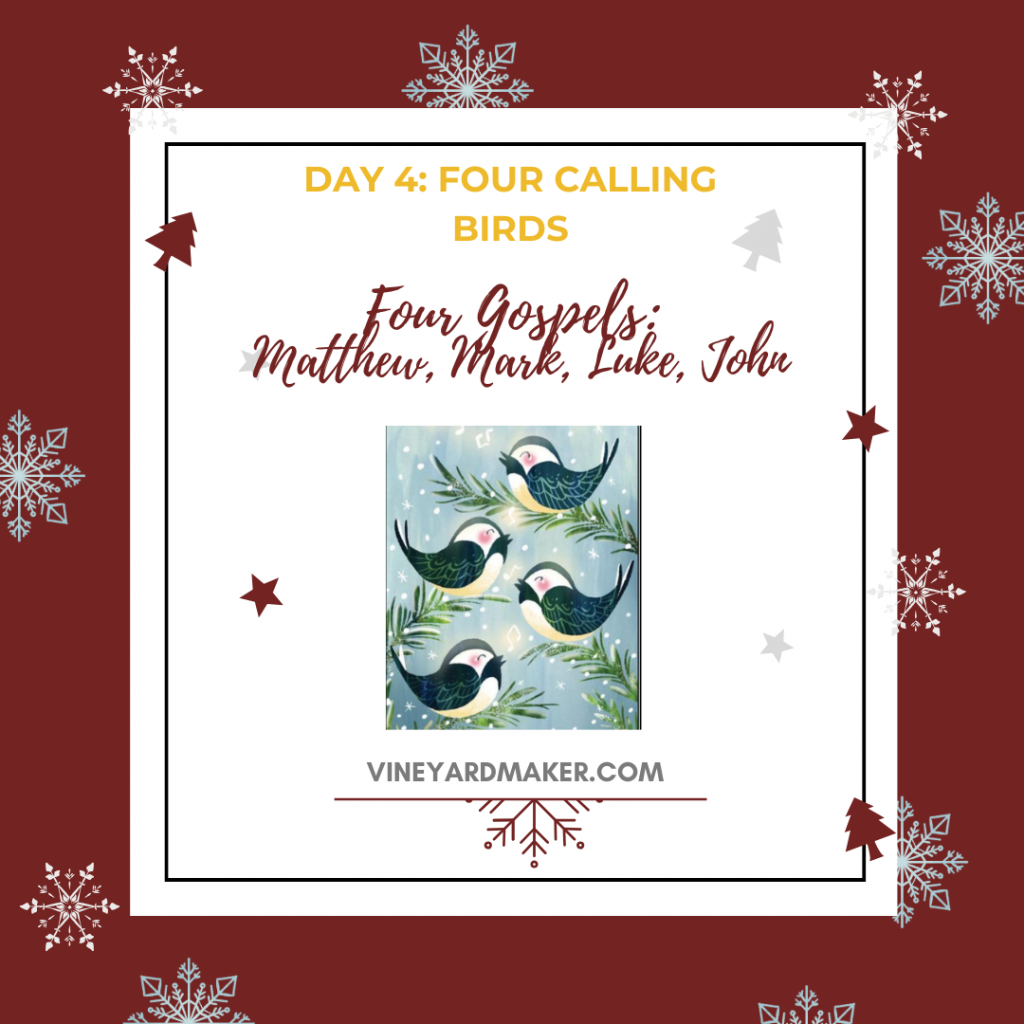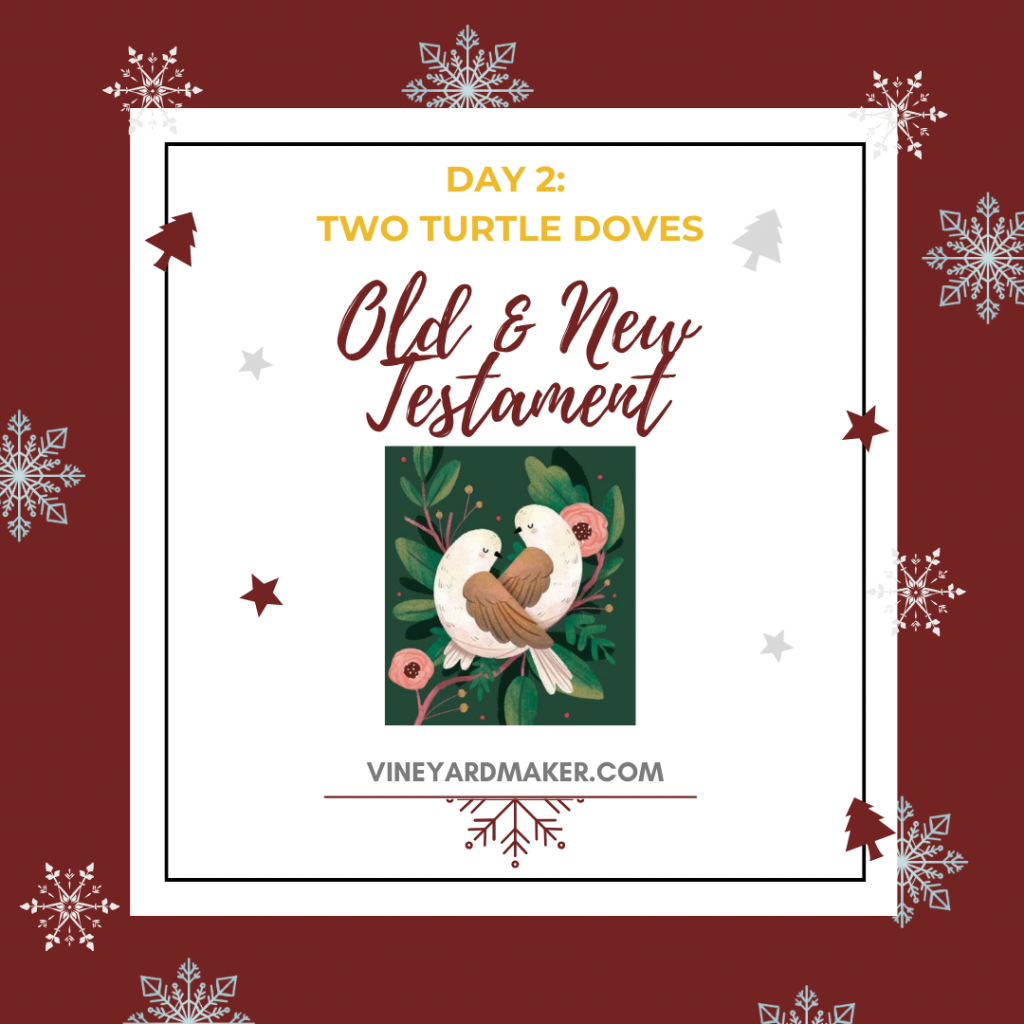
“And God said, “This is the sign of the covenant I am making between me and you and every living creature with you, a covenant for all generations to come: 13 I have set my rainbow in the clouds, and it will be the sign of the covenant between me and the earth.” Genesis 9:12-13 (NIV)
Reflection:
The five golden rings represent the first five books of the Bible, reminding us of God’s promises and covenant with His people. Reflect on God’s faithfulness in your life.
Questions to Ponder:
- What promises of God bring me comfort and hope?
- How can I trust in God’s faithfulness more fully?
The “five golden rings” stand out as a moment of beauty and significance. These golden rings are often seen as representing the first five books of the Bible, known as the Torah or Pentateuch: Genesis, Exodus, Leviticus, Numbers, and Deuteronomy. These foundational books contain God’s promises to His people and establish His covenant relationship with humanity. Today, let us explore the richness of God’s promises and what they mean for our lives as followers of Christ.
The Gold of God’s Word
Gold is a symbol of value, purity, and eternal worth. Just as gold endures and holds its beauty, so do God’s promises. In the Torah, we see the first declarations of these promises—God’s covenant with Abraham to make him a great nation (Genesis 12:2-3), His deliverance of Israel from Egypt (Exodus 6:6-7), and His provision of the law to guide His people (Exodus 20).
These promises are not just historical artifacts; they are living truths that point us to the greater fulfillment in Jesus Christ. Christ is the ultimate “golden ring,” uniting all of God’s promises in Himself. As Paul writes, “For all the promises of God find their Yes in Him” (2 Corinthians 1:20).
The Unbreakable Covenant
A ring is a symbol of commitment and eternity, often used in marriage to signify an unbreakable bond. Similarly, God’s promises are unchanging and eternal. His covenant with humanity was fulfilled through Jesus, who came to reconcile us to the Father. Through His life, death, and resurrection, Jesus secured for us what no one else could: eternal life and a restored relationship with God.
As we consider the five golden rings, we are reminded that God’s promises are steadfast, pure, and enduring. They are not dependent on our performance but on His faithfulness. When we feel weighed down by life’s challenges, we can cling to these promises with confidence, knowing that God’s Word will never fail.
Living in the Light of God’s Promises
How do we respond to the golden rings of God’s promises? First, by treasuring His Word in our hearts. The Bible is a storehouse of God’s promises, filled with declarations of His love, provision, and guidance. Second, by trusting in His faithfulness. Even when life feels uncertain, we can hold fast to the truth that God is for us. Finally, by sharing His promises with others. Just as gold reflects light, our lives can reflect the hope and assurance we have in Christ.
Reflection Questions
- What promises of God are you holding on to in this season of life?
- How does understanding God’s faithfulness in the past help you trust Him for the future?
- In what ways can you reflect the beauty of God’s promises to those around you?
- How can you incorporate a daily practice of remembering and meditating on God’s Word?
May this fifth day of Christmas fill your heart with awe and gratitude for the unshakable promises of our faithful God. Like the five golden rings, let His Word encircle your life with truth, hope, and eternal joy.

